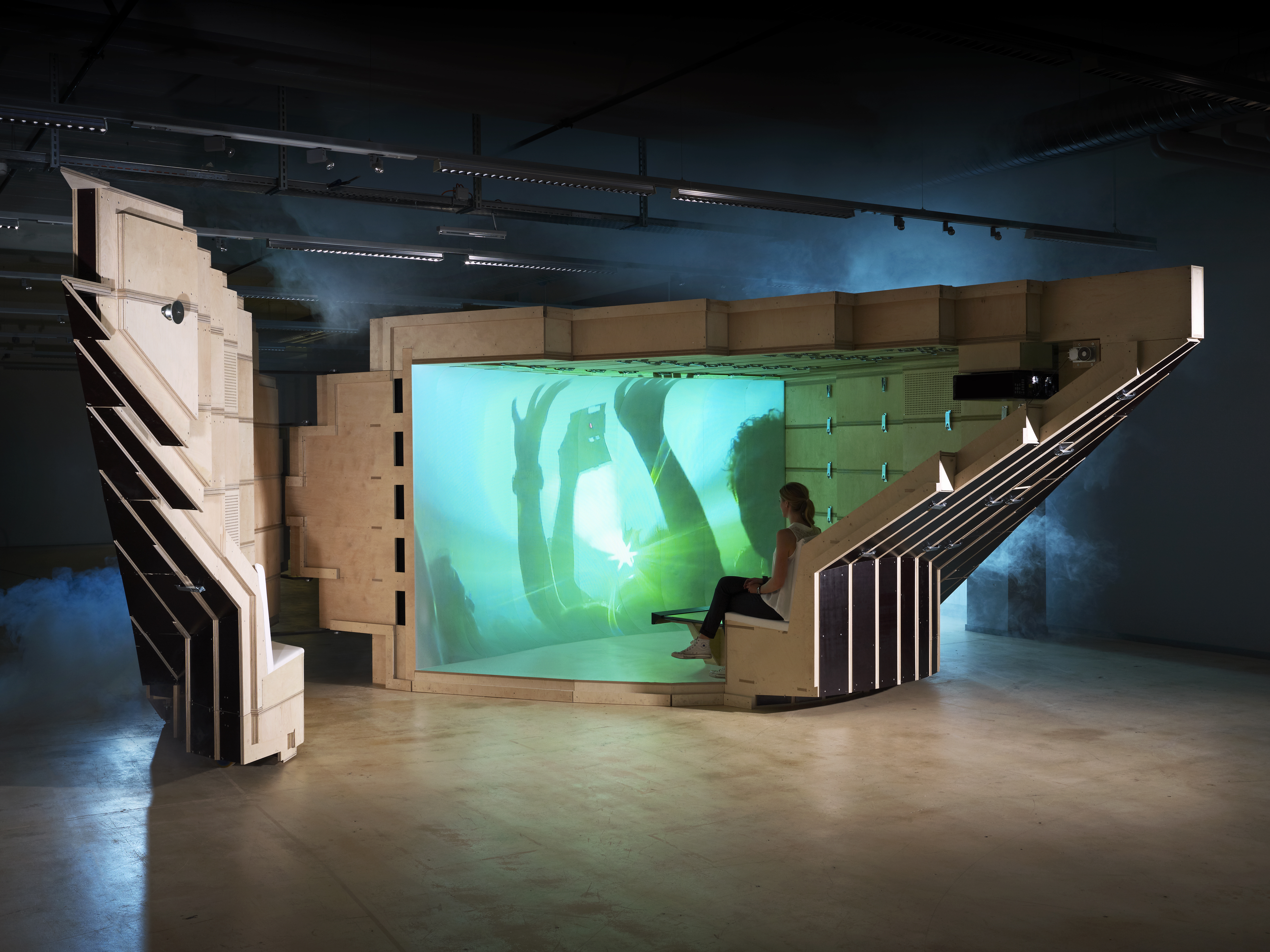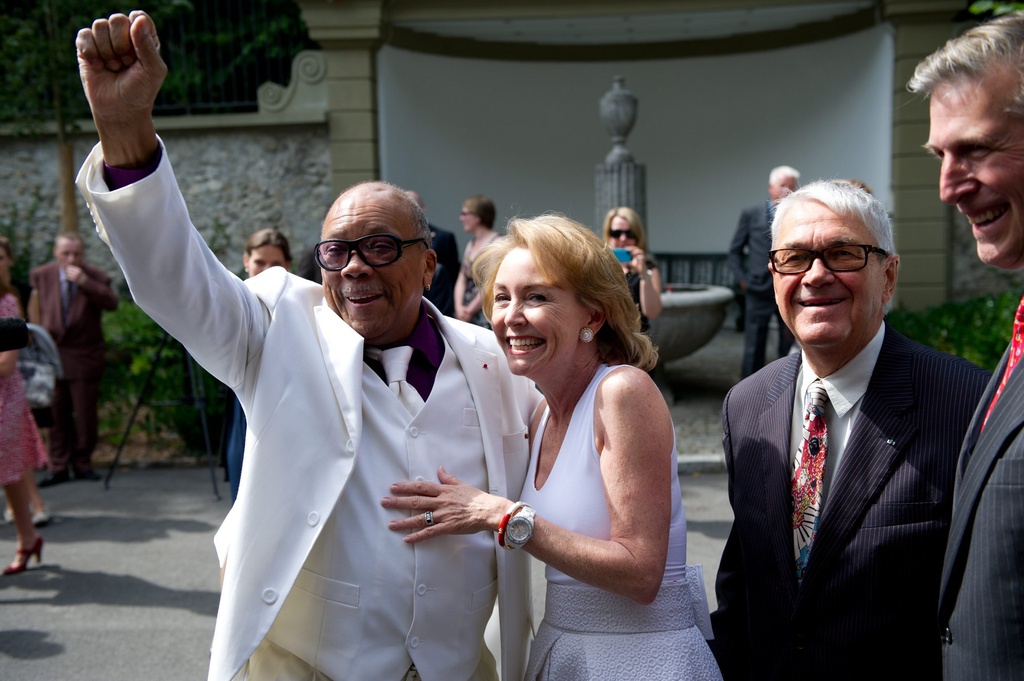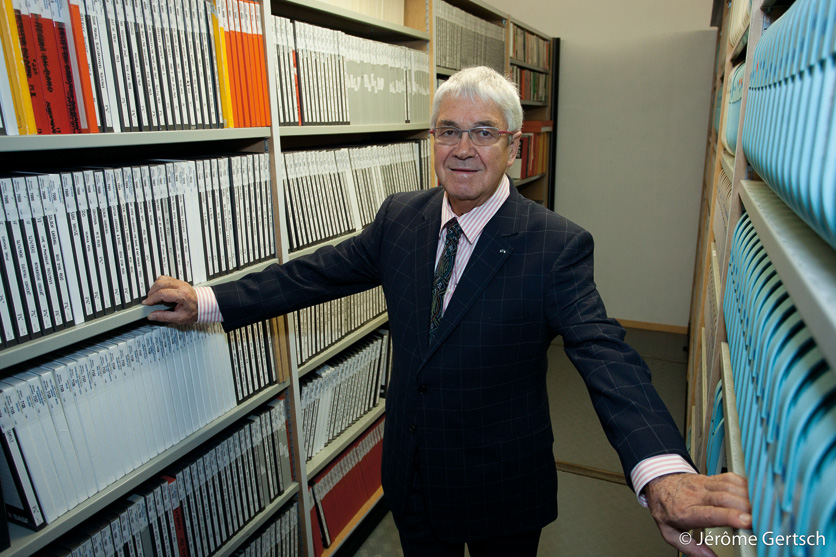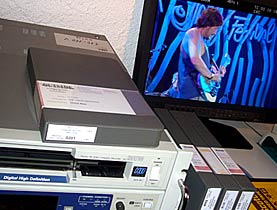Researchers exploit Montreux’s musical heritage

As the Montreux Jazz Festival gets underway, the organisers are working to enhance and exploit its vast audio-visual archive from the past 45 years while slowly making the jazz, blues and rock musical heritage available to the public.
“Sonic umbrellas”, a hi-tech “cocoon” viewing booth and walls of speakers that soundproof better than concrete – the first results of the Montreux Jazz Digital Project that uses its unique archive footage for research have begun to emerge.
At the rear of a studio at Lausanne’s ECAL design school in Renens a huge wooden honeycomb capsule flickers and pulsates.
Inside the eight-by-seven-metre-long state-of-the-art pod festival founder and director Claude Nobs is testing his new toy.
Seated in front of its specially designed curved screen, the 76-year-old taps playfully on an interactive control table searching for one of the thousands of gigs he has organised at Montreux since 1967 from what is said to be the world’s biggest collection of taped live concerts.
“It recreates the festival atmosphere totally,” said Nobs. “It’s a fantastic thing not just the incredible sound and quality images, but I can simply press jazz, concert and B.B. King, and search for one of his concerts through the entire archive – it’s unique.”
Lucky members of the public, guests and sponsors will also soon be able to immerse themselves in the festival’s history in the four-seater experimental mini theatre, nicknamed “Black Maria”, which was unveiled by Lausanne’s Federal Institute of Technology (EPFL) and ECAL a week before the 2012 edition of Montreux Jazz got underway.
Some 200 designers and audio-visual researchers worked on the cocoon, which took 18 months to complete.
The six-tonne prototype is the first tangible result of a SFr22 million ($22.5 million) long-term collaboration between the festival, EPFL and private sponsors, initiated in 2007, which aims to enhance and exploit the extensive audio-visual archives.
Alexandre Delidais, project manager at the EPFL’s MetaMedia Centre, which has been managing the partnership since 2011, said the archives had generated huge interest among students.
“When we started the project we had 15 people around the table all motivated and interested,” he told swissinfo.ch. “This magnificent present is a real source of inspiration.”
“Sonic umbrella”
As well as the viewing booth, some ten research groups, or 40 EPFL students, are using the newly digitized footage for projects ranging from audio production and post-production techniques to data stocking and novel user experiences.
These include a so-called “sonic umbrella” – a small parasol structure under which up to four people can sit to listen to music or silence to escape the surrounding din in a café, for example.
The umbrella utilises near-field beamforming acoustic techniques to focus and retain sound in a small area. In tests music played at 70dB is reduced to 40dB just two metres away.
“As well as use in bars or restaurants, you could imagine a system of microphones in your ceiling at home with personalised music following you from room to room or commentary in a museum,” said acoustic scientist Xavier Falourd.
In a similar vein, another team has developed a movable partition fitted with 64 mini speakers, which can actively absorb or diffuse sound and thus serve as an acoustic barrier between different spaces.
“It’s like sleeping next to a nightclub, it outperforms heavy concrete walls,” said EPFL researcher Hervé Lissek.
Digitalisation
Since the first edition of the festival in 1967, Nobs has kept a record of the music played there and built up a unique archive.
In all, 5,000 hours of TV and audio recordings from 4,000 concerts have been collected on 10,000 original tapes in a dozen different formats.
Unesco, the United Nations culture agency, is considering classifying the archive as world cultural heritage; a decision is imminent.
As part of the digital project the EPFL has been overseeing the real-time digitalization of the archives since 2011. So far, around 40 per cent of the total footage – 15,000 hours of work – has been stored on Linera Tape-Open (LTO) format.
The entire process should be completed by the end of 2013 with copies stored at Nobs’s chalet and at the EPFL. It will then have to be re-transferred every seven to ten years onto a “next-generation” format to keep pace with technology.
Jazz Cafes
The partners have much bigger plans for the archives, however.
This month, a jury will decide the winner of an architecture competition for the design of a “Montreux Jazz Lab”, a hybrid Montreux Jazz Cafe, concert hall and research centre, to be opened on the EPFL campus next to the futuristic Learning Centre library at the end of 2013.
“This will allow us to test all this technology and archives in a real environment,” said Delidais.
There is a catch for music fans, however. Up to now access to concert footage has only been possible via the slowly growing network of Montreux Jazz Cafes (Geneva and Zurich, to be followed this month by London, and then New York, Paris, Frankfurt and Copenhagen) and a limited number of “Live at Montreux” DVDs and CDs.
Wider audience
“You cannot simply put them on YouTube, but things might evolve,” said Delidais.
Montreux Sounds, a firm Nobs created in 1995 to manage the collection, owns the tapes, but most of the rights remain with the musicians. But under the existing Montreux Jazz contracts, the archives can be exploited for educational and research purposes.
“There is lots of interest from other universities so we looking to find a way of sharing access via the main archive database at the EPFL,” said Nobs.
The festival founder is convinced the archives could end up online and reach a much wider audience: “I think the internet will be a great carrier in the future. Just think five minutes of video per artist times 5,000 equals 25,000 minutes of music for free. For those wanting to get the full concert they simply pay a fee that goes to the musician.”
“It was always my dream to share, whether it is wine, music or walking in the woods, sharing the archives is my top priority,” said Nobs.
The 46th Montreux Jazz Festival runs from June 29-July 14.
Highlights include Bob Dylan, Van Morrison, Sergio Mendes, Herbie Hancock, Nile Rodgers and Chic, Quincy Jones, Pat Metheny, Bobby McFerrin and Chick Corea, Noel Gallagher, Lana Del Rey, Juliette Greco, Dr John, Gilberto Gil, Tony Bennett and Janelle Monae.
Claude Nobs launched the festival in 1967 with a budget of SFr10,000 (the budget is now over SFr20 million).
Deep Purple famously wrote the song Smoke on the Water about the festival after the casino caught fire shortly after Frank Zappa performed. Nobs saved several young people from the fire.

In compliance with the JTI standards
More: SWI swissinfo.ch certified by the Journalism Trust Initiative













You can find an overview of ongoing debates with our journalists here . Please join us!
If you want to start a conversation about a topic raised in this article or want to report factual errors, email us at english@swissinfo.ch.